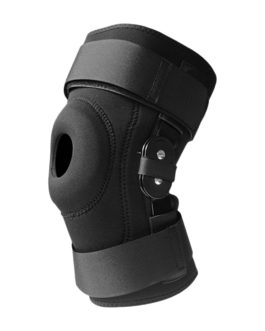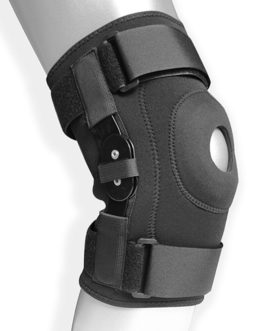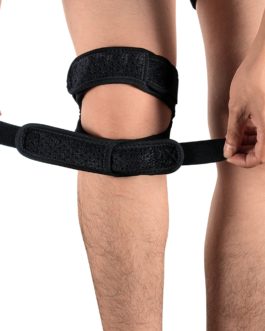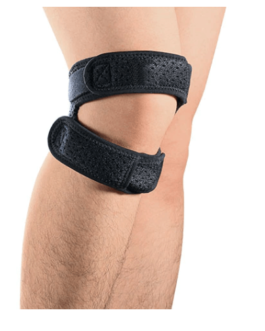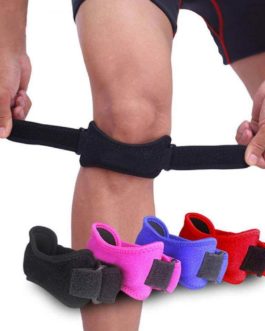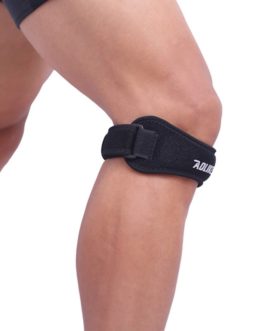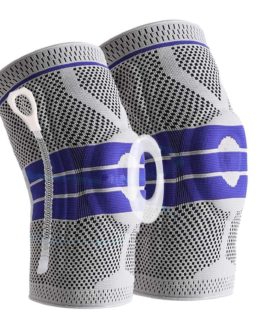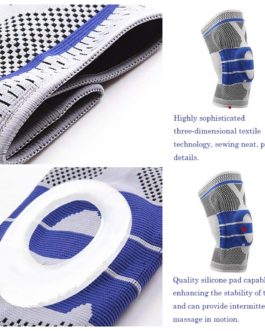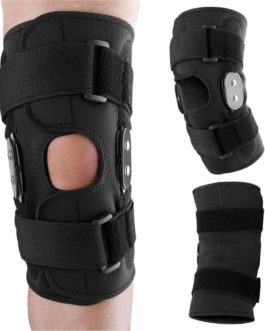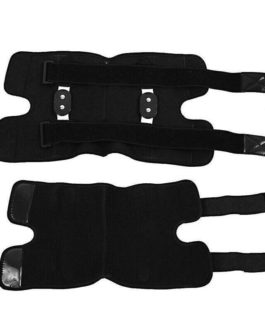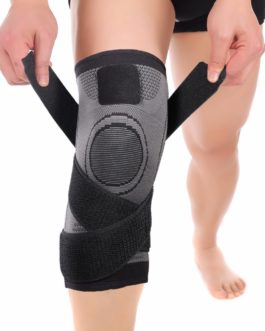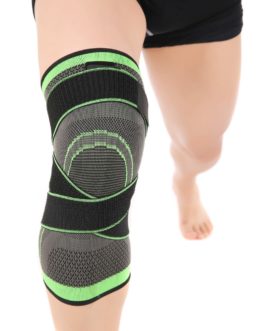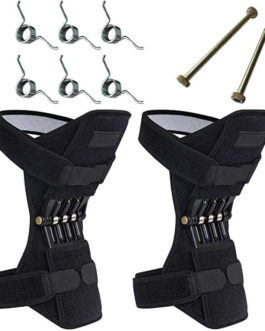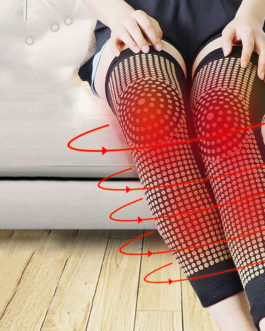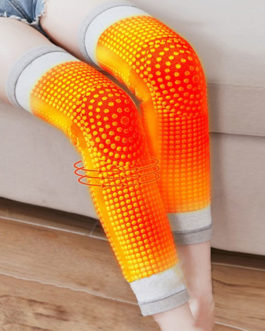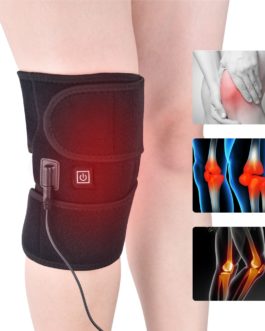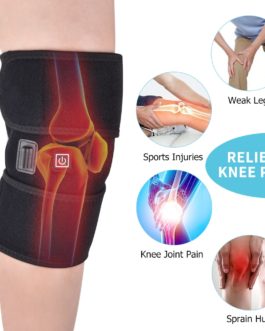-
- Adjustable Knee Patellar Tendon Support Strap
- $21.99 – $38.99
- Select options
The Colecast knee brace is used to protect, stabilize and relieve the knee joint. It is used after injuries to ligaments and muscles and after operations. Our knee braces include both the brace and the splint, which, depending on the intended use, relieves, fixes or immobilization.
What is a knee brace?
A knee support brace is a medical orthosis with many uses. Knee orthoses can consist of elastic materials, dimensionally stable foams, rigid plastic parts and length-adjustable metal rods. Individual components are tailored to the patient’s height and use and may be connected if necessary. The larger the construction, the more important it’s to have a stable fixation using Velcro fasteners or special clips. Soft padding ensures comfort.
When do you use a knee brace?
The large product range of different knee braces shows that there are a large number of uses for knee orthoses.
Elastic knee supports allow the best mobility and are mostly used when the joint is not unstable or when there’s inflammation. They work mainly through pressure and heat. For the therapy of knee pain , pads (pads) are often incorporated that press on the patellar tendon – so-called patellar tendon bandages.
The knee brace is used for greater instabilities. It uses additional components such as plastic stabilizing bars to limit the flexion and extension of the knee and the rotational movement of the thigh against the lower leg, or it completely fixes the joint. Typical areas of application are injuries to ligaments and muscles and the care of the knee after operations with the help of a knee orthosis. Sports and other activities with great acceleration forces or unnatural movements put a strain on the knee joint , which can benefit from the protective effect of a special sports orthosis.
How does a Colecast knee brace work?
Our knee braces relieve the inner or outer joint area, works according to the three-force principle or three-point operating principle: There are three points of contact, two of these points stabilize the joint and the third point exerts gentle pressure. The knee brace material used relieves the joint and thus leads to a big reduction in pain and an increase in stability.
Sport for osteoarthritis of the knee: Absolutely recommended!
Do sports with osteoarthritis of the knee? Definitely! Osteoarthritis means wear and tear on the joint. And as the old saying goes: if you rest, you rust! Therefore, adapted movement is even beneficial in order to maintain the mobility that’s still available at a level that’s as constant as possible. It helps to build muscles that stabilize the joint.
In addition, exercise leads, in the best case, to weight reduction, which also has a positive effect on osteoarthritis of the knee: The less weight the knee joint has to bear, the less pain there is.
Because a knee brace (or a knee brace if the pain is less severe), as mentioned, relieves pain and increases mobility thanks to its operating principle, such support is very recommended if you want to try to do sports again or continue to do so despite osteoarthritis of the knee.
Knee braces for prevention and support during sports
Competitive athletes sometimes use a knee brace as a preventive measure to protect the joint from overload . Even if you’re only a recreational athlete , this fact shows that a knee brace can serve as reliable protection during sports .
If you wear a knee orthosis for preventive purposes during sport , you take advantage of the cushioning effect of the orthosis and thus protect the knee joint. Wearing a knee orthosis prophylactically can also be useful in various cases. Among other things:
- After a recently healed knee injury, a cruciate ligament rupture, or an operation on the knee joint: Whenever the knee joint is allowed to move more intensely, but has not yet regained its full resilience and stability.
- If you’ve got suffered a number of knee injuries in the past – especially if you already suffer from general instability of the knee joint as a result.
In both cases, the sports knee brace compensates for the instability of the knee. It gives the knee joint support from the outside and thus protects against renewed injuries.
In addition, in various sports where the knee joint is exposed to a particularly high risk of injury, it’s proven useful to wear a sports knee brace as a preventive measure, like when
- Motocross
- Mountain biking
- Ski sports or water skiing
- jog
- squash
- tennis
- basketball
Causes of knee pain: this is where the knee brace helps to become mobile again
The knee is the largest joint in the human body. As such, it’s exposed to great stress every day – especially when doing sports. It can buffer up to 5 times our body weight!
However, we often only notice what our knee is doing for our mobility when it hurts. In the event of knee pain, we automatically withdraw and try to put as little strain on the joint as possible. Mobility is clearly restricted: continuing to exercise often seems almost impossible. But what are the triggers for knee pain and what can help against it? There are very different causes, the most common are briefly summarized here:
- Chronic diseases like osteoarthritis (arthrosis of the knee). It’s one among the most common diseases of the knee and causes wear and tear of the articular cartilage. It usually begins insidiously until the knee becomes stiff and painful at some point. Gon arthrosis (like any form of osteoarthritis) is unfortunately not completely curable – but by wearing a knee brace it’s possible to significantly reduce the pain and thereby regain a large part of your mobility and quality of life.
- Both knee braces and orthotics for the knee are also used for (sports) injuries to the knee, whenever a ligament or tendon is torn in the knee. Most often, a brace is used in the event of a cruciate ligament tear with subsequent cruciate ligament surgery. The treatment of a meniscus injury also requires an aid so as to be able to heal better.
- In addition, a knee orthosis is also used after an operation on the knee in order to protect the joint from excessive or incorrect loading during the healing process.
Conclusion
There are many reasons that make wearing an ankle brace necessary and helpful. The Colecast knee braces can help you to become mobile, to remain and to enjoy sport again – both with osteoarthritis of the knee and after a knee injury like a cruciate ligament rupture or after an operation on the knee. You can also wear Colecast knee support braces during sports to prevent injuries.

